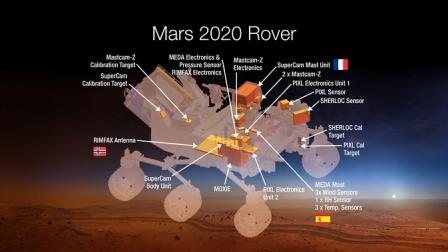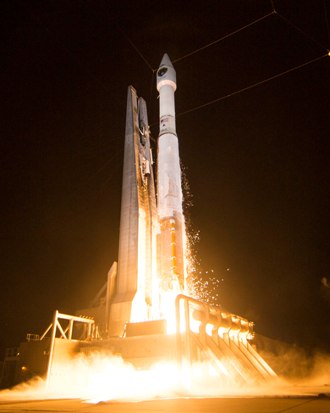
MOXIE will be one of seven payload instruments on the Mars 2020 rover. A NASA photo
WASHINGTON (PTI): An MIT oxygen-creating instrument will fly on the upcoming Mars 2020 mission to study how to make oxygen out of the Martian atmosphere.
NASA has announced the seven instruments that will accompany Mars 2020, a planned USD 1.9 billion roving laboratory similar to the Mars Curiosity rover currently cruising the Red Planet.
Key among these instruments is a Massachusetts Institute of Technology (MIT)-led payload known as MOXIE, which will play a leading role in paving the way for human exploration of our ruddy planetary neighbour.
MOXIE - short for Mars OXygen In situ resource utilisation Experiment - was selected from 58 instrument proposals submitted by research teams around the world.
The experiment, currently scheduled to launch in the summer of 2020, is a specialised reverse fuel cell whose primary function is to consume electricity in order to produce oxygen on Mars, where the atmosphere is 96 per cent carbon dioxide.
If proven to work on the Mars 2020 mission, a MOXIE-like system could later be used to produce oxygen on a larger scale, both for life-sustaining activities for human travellers and to provide liquid oxygen needed to burn the rocket fuel for a return trip to Earth.
"Human exploration of Mars will be a seminal event for the next generation, the same way the Moon landing mission was for my generation," said Michael Hecht, principal investigator of the MOXIE instrument and assistant director for research management at the MIT Haystack Observatory.
One of the main goals of the Mars 2020 mission will be to determine the potential habitability of the planet for human visitors, researchers said.
The MOXIE instrument will attempt to make oxygen out of native resources in order to demonstrate that it could be done on a larger scale for future missions.
MOXIE will be designed and built as what Hecht calls a "fuel cell run in reverse." In a normal fuel cell, fuel is heated together with an oxidiser - often oxygen - producing electricity.
In this case, however, electricity produced by a separate machine would be combined with carbon dioxide from the Martian air to produce oxygen and carbon monoxide in a process called solid oxide electrolysis.
"It's a pretty exotic way to run a fuel cell on Earth, but on Mars if you want to run an engine, you don't have oxygen. Over 75 per cent of what you would have to carry to run an engine on Mars would be oxygen," Hecht said.
Setting up a system to create oxygen that human explorers could breathe would be extremely helpful for a mission of any duration. But there's an equally important reason to be able to produce oxygen onsite.
"When we send humans to Mars, we will want them to return safely, and to do that they need a rocket to lift off the planet. That's one of the largest pieces of the mass budget that we would need to send astronauts there and back. So if we can eliminate that piece by making the oxygen on Mars, we're way ahead of the game," Hecht said.
 Previous Article
Previous Article Next Article
Next Article












The Indian Air Force, in its flight trials evaluation report submitted before the Defence Ministry l..
view articleAn insight into the Medium Multi-Role Combat Aircraft competition...
view articleSky enthusiasts can now spot the International Space Station (ISS) commanded by Indian-American astr..
view article